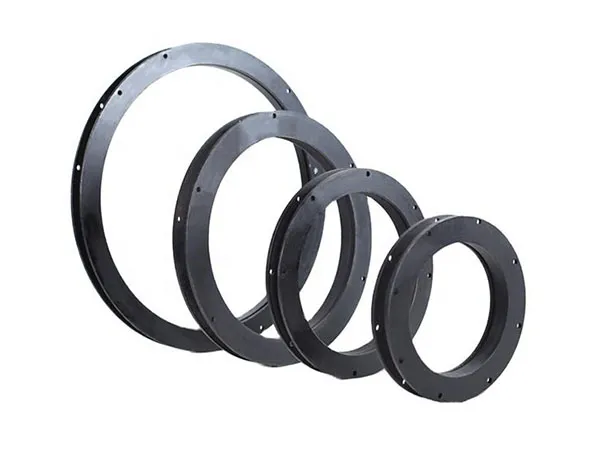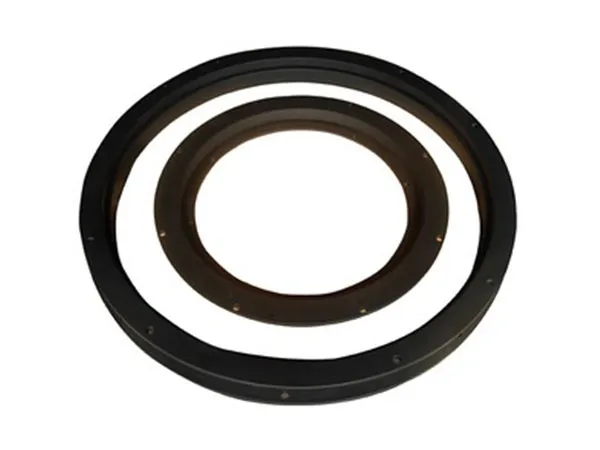- +86 13837949030 +86 15890619536
- info@lymcbearings.com export@lymcbearings.com
- Luoxin Industrial Cluster, Luoyang City,Henan Province,China
Time:2025-08-07 08:00:55 Source:LYMC Slewing Bearing
Installing a trailer turntable bearing correctly is essential for achieving smooth rotation, safe towing performance, and long-term durability. A poorly installed bearing can lead to serious issues—including misalignment, excessive friction, abnormal noise, and even structural failure of the trailer. To help trailer manufacturers, technicians, and owners achieve the best installation quality, this guide provides a detailed, step-by-step explanation covering preparation, mounting, bolt tightening, lubrication, inspection, and maintenance practices.
While each bearing manufacturer may specify different requirements, the following guidelines represent industry-standard best practices suitable for most trailer turntable bearings on the market.

Correct installation begins long before the first bolt is tightened. Proper preparation helps eliminate hidden risks and ensures the bearing can operate under load without premature wear.
Ensure flat and clean mounting surfaces
The mounting surfaces on both the trailer chassis and the A-frame must be flat, rigid, and completely clean. Remove rust, welding slag, thick paint layers (over 50 μm), and any other contaminants.
Even minor unevenness can affect bearing performance. If unevenness is within 1 mm, it can be corrected using shims or metal filler to create a uniform surface.
Confirm bearing model and technical specifications
Choose a bearing that matches the trailer’s load capacity, turning radius, and operational conditions. Always check:
Outer diameter and inner diameter
Dynamic and static load capacity
Bolt hole positions
Presence of a “soft zone” marked with S
This soft zone must be installed in an area that receives the least load to avoid early deformation and fatigue.
Prepare professional installation tools
To ensure a precise installation, prepare the following:
High-tensile bolts (Grade 8.8 or higher)
A calibrated torque wrench
Leveling or spherical washers
A grease gun
Measuring tools for alignment
Using substandard tools is one of the most common causes of incorrect bolt torque and bearing misalignment.
This section covers the core steps involved in physically installing the turntable on the trailer.
Never weld the bearing directly
Turntable bearings are precision components. Welding will distort the internal raceways due to heat exposure. Weld only the adjacent structural blocks—not the bearing itself.
Correct positioning of upper and lower rings
The lower ring is typically mounted on the A-frame.
The upper ring is mounted on the trailer chassis or platform.
Maintaining correct orientation ensures that the bearing rotates freely and withstands vertical and horizontal loads effectively.
Bolting and tightening sequence
Use at least eight high-tensile bolts per flange unless the manufacturer specifies otherwise. For compact trailer models, four to six bolts may be acceptable.
Always tighten bolts in a crosswise (X-pattern) sequence to apply even pressure and avoid distortion.
Proper bolt torque settings
Bolt torque is a critical safety factor.
Tighten to manufacturer-recommended torque values.
Pre-tightening force should be about 70% of bolt yield strength.
Leveling washers help ensure even pressure; do not use spring washers because they loosen over time.
Reducing shear load on bolts
Trailer turntables are subjected to heavy side loads during turning. To reduce shear load:
Weld at least four support blocks next to each flange.
These blocks transfer side force away from the bolts.
This significantly improves stability and prevents bolt failure during difficult terrain operation or tight turning.

Lubrication is essential to prevent metal-to-metal friction and ensure smooth rotation.
Initial lubrication (mandatory even for new bearings)
Even if the bearing comes pre-lubricated, a full greasing is necessary before putting the trailer into operation. Factory grease is minimal and only protects against corrosion.
Recommended lubricant
Use high-quality lithium-based grease (NLGI Class 2). This type of grease:
Resists water
Maintains stability under pressure
Works well in heavy-duty load conditions
Correct lubrication technique
While applying grease:
Rotate the A-frame to ensure even distribution inside the raceway.
Continue pumping grease until a clean, visible collar forms between the inner and outer rings.
This collar acts as a protective barrier, blocking sand, dirt, and water from entering the bearing and causing contamination.
Proper maintenance ensures that the bearing continues to perform reliably even after thousands of kilometers of towing.
First inspection after 100 hours of operation
The initial use phase may cause bolts to settle and lose tension. After the first 100 hours:
Recheck bolt torque
Inspect for unusual noise or resistance
Correcting minor issues early can prevent major failures.
Routine lubrication and bolt inspection
Regular maintenance helps extend the bearing’s service life.
Grease the bearing monthly or according to the trailer’s usage conditions.
More frequent lubrication is recommended for off-road trailers or heavy-duty applications.
Inspect all mounting bolts during maintenance to ensure they remain tight and secure.
Monitoring bearing wear
Turntable bearings naturally wear due to rotation and load cycles.
Use a wear gauge to measure axial play.
When axial play reaches 2.5 mm, the bearing has reached its wear limit and must be replaced.
Ignoring wear limits can result in unstable trailer handling and dangerous road conditions.
Although this guide covers general installation principles, every turntable bearing model may have specific requirements regarding bolt size, torque settings, lubrication intervals, and mounting dimensions.
Always follow the official installation and maintenance manual provided by your bearing manufacturer to ensure full compliance with safety standards and maximum bearing performance.